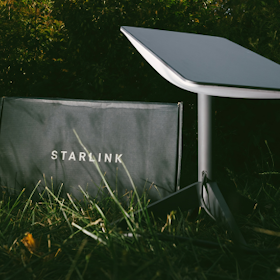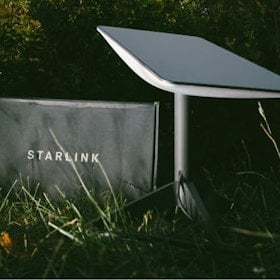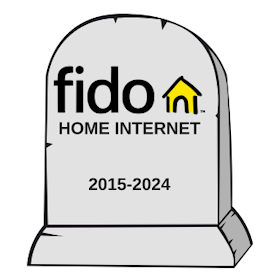
- Affordable Wi-Fi 6 mesh router
- Includes MU-MIMO and QoS

- Exceptional performance
- Best Wi-Fi 6E mesh router available
A strong internet connection is a must-have. Whether you’re working from home, streaming video in 4K, or gaming online, nearly everything is internet-connected now. Therefore, a high-quality Wi-Fi router is a necessity.Mesh Wi-Fi provides whole-home wireless networking, which can be great for reducing dead zones.
"Okay," you say, "I get it. But how do I choose a good Wi-Fi mesh?" We're glad you asked. We scoured every corner of the internet, looking for the best mesh networks according to price, performance, and practicality.
Here's what we found:
- Eero Pro 6: Best overall Wi-Fi mesh system
- Asus ZenWiFi XT8: Best system for Wi-Fi 6E
- TP-Link Deco X20: Best budget Wi-Fi mesh system
- Netgear Orbi RBK852: Best mesh Wi-Fi system for speed
Best mesh Wi-Fi systems June 2024
| Plan | Best For | Learn More |
|---|---|---|
| Eero Pro 6 | Wi-Fi mesh system | Buy from Amazon |
| Asus ZenWiFi XT8 | Wi-Fi 6E | Buy from Amazon |
| TP-Link Deco X20 | Budget | Buy from Amazon |
| Netgear Orbi RBK852 | Speed | Buy from Amazon |
Eero Pro 6: Best Wi-Fi mesh system overall

Pros:
- Wi-Fi 6 support
- Tri-band router
- Wired backhaul
- SQM and MU-MIMO
- Excellent wireless performance
Cons:
- Not the cheapest
- Eero subscription required for certain features such as parental controls
- Lacks QoS
A user-friendly Wi-Fi 6 mesh router
The outstanding Eero Pro 6 mesh Wi-Fi system may be one of Amazon’s best acquisitions to date. It’s a reasonably priced tri-band router that features Wi-Fi 6 and offers excellent whole-home coverage, with up to 2,000 square feet per router/node and support for over 75 different internet-enabled devices. For large homes with tons of connected devices, you don’t have to worry about internet speeds or dead zones. And because of its Wi-Fi 6 connectivity, you’ll experience up to gigabit wireless speeds. If you have a lot of devices connected to your router, the Eero Pro 6 is up to the challenge.
Setup is a breeze—using the Eero app, you can install your mesh router in minutes. A slew of smart home features makes the Eero Pro 6 great for home automation fanatics. Since Eero is now an Amazon company, Amazon Alexa is baked in. Additionally, a Zigbee radio is built in to connect devices using the Zigbee smart home communication protocol.
A few additional notable features include:
- 1.6GHz quad-core processor, 1GB RAM, 4GB flash memory: Under the hood, you’ll find a 1.6GHz quad-core CPU, 1GB of RAM, and 4GB of flash storage space. That’s more than enough horsepower for a router.
- Wired Ethernet backhaul: In mesh networking, the main router and each node must be able to “talk” to one another. Often, they’re connected wirelessly using Wi-Fi. But hooking the router and satellites up via an Ethernet cable (known as an Ethernet backhaul) is ideal for situations where Wi-Fi signals can’t penetrate such as buildings with thick walls.
- Advanced networking features: The Eero Pro offers multiple-user, multiple-input, multiple-output (MU-MIMO), which allows your router to better handle a large number of connected devices. If you have a lot of gadgets that all require Wi-Fi such as phones, tablets, laptops, game consoles, and streaming devices, MU-MIMO will reduce network slowdowns. There’s also Smart Queue Management (SQM) which lets you prioritize types of traffic such as video streaming or teleconferencing.
Lacks true QoS, subscription required for some premium features
Disappointingly, certain oft-used networking features are notably absent. The Eero Pro 6 lacks Quality of Service (QoS), which lets you prioritize different types of network traffic such as online gaming or streaming video. You can even choose devices to prioritize traffic from. Then, at times of heavy network congestion, your Zoom calls, for example, may earn priority over Netflix streaming.
Rather than QoS, Eero implements its proprietary Smart Queue Management (SQM). SQM works well enough, although it’s completely automatic. There’s no user control, meaning you can’t manually select devices or types of network traffic to prioritize.
Certain features also cost extra. For parental controls and anti-malware, you’ll need to shell out for a subscription. Eero offers two subscription plans: Eero Secure and Eero Secure+. With Eero Secure, you’ll gain access to amenities such as content filtering, whole-home ad blocking, and safe search. Opting for Eero Secure+ gives you everything from Eero Secure, but adds subscriptions to Malwarebytes anti-malware, the password manager 1Password, and an encrypt.me VPN.
Eero Pro 6 specs
| Wi-Fi 6 | Yes |
|---|---|
| Router | 1.6GHz quad-core processor, 1GB RAM, 4GB flash memory |
| Number of bands | 3 (tri-band router) |
| Total coverage area | 2,000 sq. ft./router or node |
| Wi-Fi speed | AX4200 (theoretical total bandwidth of 4,200Mbps split across its three bands) |
| MU-MIMO | Yes |
| Beamforming | Yes |
| QoS | No (includes Smart Queue Management, a watered-down form of QoS) |
| Security protocols | WPA2, WPA3 |
| IPv6 support | Yes |
| Ethernet ports | Yes (Primary router: 1x Ethernet LAN; Nodes: 2x Ethernet jacks) |
| Wired backhaul | Yes |
| Extra software | Parental controls, anti-malware software (available with paid subscription) |
| USB ports | 0 |
ASUS ZenWiFi XT8: Best Wi-Fi 6E mesh Wi-Fi system

Pros:
- Wi-Fi 6E
- Tri-band router
- Fast AX6000 networking speeds
- Up to 5,500 square foot coverage
- Wired backhaul
Cons:
- Expensive
Wi-Fi 6E meets mesh
The ASUS ZenWiFi XT8 is an exceptional tri-band Wi-Fi 6E mesh router. Whereas Wi-Fi 6 includes the 2.4GHz and 5GHz bands, Wi-Fi 6E adds a 6GHz band. This spectrum means less latency, higher throughput, and reduced network congestion. With these three bands, the ZenWiFi is capable of handling loads of connected devices at once. Boasting a whopping 6,600Mbps total bandwidth split across its three bands, the XT8 is over twice as fast as a tri-band Wi-Fi 5 router. What does all of this mean for you? Essentially, you’ll experience a significant reduction in network congestion, plus less buffering for streaming and reduced lag with online gaming.
ASUS throws in Instant Guard, which is a personal VPN. Using Instant Guard, you can connect to your home internet network while you’re away, tricking apps and websites into thinking you’re at home when really you’re elsewhere. (Hidden benefit: you can access the Canadian version of Netflix while abroad!). Additionally, Instant Guard offers added protection while connected to unsecured public Wi-Fi at your favourite coffee shop or the airport.
For demanding applications such as streaming video in 4K or even 8K quality, low-lag online gaming, or a network with tons of devices, the ASUS ZenWiFi ET8 is an outstanding choice. Additional features include:
- 1.5GHz quad-core CPU, 512MB RAM, 256MB flash storage: With a 1.5GHz quad-core processor, 512MB of RAM, and 256MB of flash storage, the ASUS ET8 has respectable performance.
- 2,750 square feet of coverage: With up to 5,500 square feet of total coverage (2,750 square feet/router or node), you can ensure whole-home wireless signals and eliminate dead spots.
- Wired backhaul: The wired backhaul lets you daisy-chain your primary router and satellite routers together using Ethernet.
Overall, the ASUS ZenWiFi ET8 is a simple-to-install mesh router that delivers best-in-class throughput with ultra-low latency. Its wired Ethernet backhaul and multi-gig WAN make it a spectacular mesh Wi-Fi solution for power users in need of insanely fast internet for streaming, gaming, or smart home devices.
You get what you pay for
Amazing performance and a premium feature set sound perfect. What’s the catch? Well, you get what you pay for—and in this case, you can expect to shell out a lot of dough. You’ll typically find the ASUS ZenWiFi XT8 for over $500 CAD, including a primary router and a single node. Need more access points? Those will cost you extra.
And Wi-Fi 6E hasn’t (yet) seen wide adoption. Mobile devices that rock Wi-Fi 6E include the iPhone 13, Samsung Galaxy S21 Ultra, Galaxy Z Fold 3. However, we do predict that many forthcoming flagship phones, tablets, and PCs will begin to utilize Wi-Fi 6E. Granted, it can’t hurt to have a Wi-Fi 6E mesh system for future-proofing. Even if your current phone lacks 6E, the chances are that your next one will have it.
ASUS ZenWiFi XT8 specs
| Wi-Fi 6E | Yes |
|---|---|
| Router | 1.5GHz quad-core CPU, 512MB RAM, 256MB flash storage |
| Number of bands | 3 (tri-band router) |
| Total coverage area | 2,750 sq. ft./router or node |
| Wi-Fi speed | AX6000 (up to 6,600Mbps total split across its three bands) |
| MU-MIMO | Yes |
| Beamforming | Yes |
| QoS | Yes |
| Security protocols | WPA3 |
| IPv6 support | Yes |
| Ethernet ports | Yes (Main router and nodes: 1x multi-gig Ethernet WAN, 3x Ethernet LAN ports) |
| Wired backhaul | Yes |
| Extra software | Parental controls, Instant Guard personal VPN |
| USB ports | Yes (1x USB 3.0 port) |
TP-Link Deco X20: Best budget mesh Wi-Fi system

Pros:
- Affordable
- Wi-Fi 6
- Fast AX1800 networking speeds
- Up to 2,000 square foot coverage/router or node
- Advanced features such as MU-MIMO and QoS
- Free anti-malware software and parental controls
- Dual-band router
Cons:
- Average wireless speeds
- Not tri-band
- Lacks the 160 MHz channel
A good, inexpensive Wi-Fi 6 mesh router
Mesh Wi-Fi doesn’t come cheap. Not only is there the initial upfront cost, but each additional node costs extra. Many mesh wireless packages include a primary router along with a node or two. But you’ll need to budget for satellite routers. Luckily, TP-Link’s Deco X20 comes with an affordable price tag.
Despite its affordability, the Deco X20 packs Wi-Fi 6 support, so you can expect faster speeds and lower latency than with a Wi-Fi 5 router. It has a total throughput of up to 1,800Mbps split across its two bands. There’s up to 2,200 square feet of coverage with a single router, 4,000 with two routers, and almost 6,000 square feet of coverage with three. Plus, we found a bunch of other features to love about this budget-friendly system:
- 1GHz quad-core CPU, 512MB of RAM, 128MB flash storage: With its 1GHz quad-core CPU, 512MB of RAM, and 128MB of flash storage, the TP-Link Deco X20 has ample processing power for a router.
- Free anti-malware tools: Many routers offer a software suite with many tools, and anti-malware may be included. Often, it’s at an additional cost. However, the X20 comes with free standard anti-malware software.
- Wired Ethernet ports: There’s a single Ethernet port on the primary router, while the Deco X20’s nodes have two Ethernet jacks apiece.
- AX1800 speed: As an AX1800 router, the X20 can achieve up to 1,800Mbps total speeds.
- Advanced networking features: Quality of Service and MU-MIMO are standard.
With a solid overall list of features and an affordable price tag, the TP-Link X20 punches well above its weight class.
Average performance
Compared with pricier mesh Wi-Fi systems such as the Eero Pro 6 and ASUS ZenWiFi ET8, the TP-Link Deco X20 underperforms. In its testing, PC Mag found that the X20’s primary router clocked speeds around 654Mbps while close to the router itself. In long-range tests of about 30 feet away, performance took a nosedive with nearly one-third of the speed at 225Mbps.
The 160 MHz channel bandwidth is a significant selling point of Wi-Fi 6. Thus, the X20 is unable to reach maximum theoretical Wi-Fi 6 speeds. Nevertheless, the TP-Link Deco X20 is a fantastic option that balances price and performance.
Tp-Link Deco X20 specs
| Wi-Fi 6 | Yes |
|---|---|
| Router | 1GHz quad-core CPU, 512MB of RAM, 128MB flash storage |
| Number of bands | 2 (dual-band router) |
| Total coverage area | 2,000 square feet per router/node |
| Wi-Fi speed | AX1800 (up to 1,800Mbps total bandwidth split across its two bands) |
| MU-MIMO | Yes |
| Beamforming | Yes |
| QoS | Yes |
| Security protocols | WPA2, WPA3 |
| IPv6 support | Yes |
| Ethernet ports | Yes (Main router: 1x Ethernet port; Nodes: 2x Ethernet jacks) |
| Wired backhaul | Yes |
| Extra software | Parental controls, anti-malware software |
| USB ports | No |
Netgear Orbi RBK852: Best mesh Wi-Fi for fast ISPs

Pros:
- 2.5Gbps speeds
- Wi-Fi 6
- Solid network performance
- Lots of Ethernet ports
- Up to 5,000 sq. ft. of coverage
Cons:
- Lacks premium features like QoS, anti-malware software, and parental controls
- Pricey
Multi-gig, lots of Ethernet ports
The Netgear Orbi RBK852 is a phenomenal smart mesh Wi-Fi router. It’s a tri-band Wi-Fi 6 mesh router (which reduces congestion) capable of covering 5,000 square feet with two routers (2,500 square feet/router or node) and enough bandwidth to handle over 100 devices. As high as 6Gbps of total network throughput is split across its three bands. Check out everything else we love about this powerhouse Wi-Fi system:
- 2.2GHz quad-core CPU, 1GB RAM, 512MB flash memory: A beefy 2.2GHz processor paired with 1GB of RAM and 512GB of flash memory ensures that this Netgear Orbi mesh router won’t get bogged down.
- 2.5Gbps port, lots of LAN ports: On the main router, there’s multi-gig (greater than 1Gbps) internet support with a compatible Internet Service Provider (ISP). Additionally, you’ll find four 1Gbps Ethernet ports. The satellite node sports four gigabit Ethernet jacks as well.
- Advanced networking features: MU-MIMO is a standard feature for better handling of multiple connected devices.
A high-end device, the Netgear Orbi RBK852 is a top performer, even with several walls in the way. And its 2.5Gbps WAN port lets you reach your internet’s full potential if you’ve got over 1Gbps network speeds from your ISP.
Premium pricing without some premium features
Oddly, considering its high price tag, the Netgear Orbi RBK852 doesn’t include features that are common for other mesh networks. Notably, QoS is absent, and you won’t find parental controls or anti-malware software. Its younger sibling, the Orbi RBK13 Wi-Fi 5 router, does have parental controls along with malware protection.
While you don’t get true Quality of Service, the RBK852 does have a watered-down version with Wi-Fi Multimedia Quality of Service (WMM QoS). WMM QoS solely allows for the prioritization of video and voice traffic. Despite a few shortcomings, this mesh router has a 2.5Gbps WAN jack and tons of Ethernet LAN ports, making it a good option if you’ve got extremely fast multi-gig internet speeds.
Netgear Orbi RBK852 tech specs
| Wi-Fi 6 | Yes |
|---|---|
| Router | 2.2GHz quad-core CPU, 1GB RAM, 512MB flash memory |
| Number of bands | 3 (tri-band router) |
| Total coverage area | 5,000 square feet (2,500 square feet per router/node) |
| Wi-Fi speed | AX6000 (up to 6,000Mbps total bandwidth split across its three bands) |
| MU-MIMO | Yes |
| Beamforming | Yes |
| QoS | No (includes Wi-Fi Multimedia Quality of Service) |
| Security protocols | WPA3 |
| IPv6 support | Yes |
| Ethernet ports | Yes (Primary router: 1x 2.5Gbps multi-gig Ethernet WAN port, 4x gigabit Ethernet LAN jacks; Nodes: 4x gigabit LAN) |
| Wired backhaul | Yes |
| Extra software | No (lacks parental controls and anti-malware software) |
| USB ports | No |
What is mesh Wi-Fi?
Researching new technology can feel overwhelming, making you long for the days of simple, traditional routers. It might make you wonder: is mesh Wi-Fi really better? The answer is a definitive "yes." Let's break down how mesh Wi-Fi works so you can better understand what makes this such a valuable addition to your home.

A wireless network includes a router and a modem, either combined or as separate equipment. A modem is effectively like a gatekeeper, serving as the connection point between your home and your internet service provider (ISP) and bringing an internet signal into your house. A router distributes that network signal to different wired and wireless devices throughout your home.
Traditional router configurations feature a single device that broadcasts a wireless signal. However, Wi-Fi mesh systems utilize a primary router along with several nodes (often referred to as access points, satellite routers, or nodes) all sending out the same wireless signal. Essentially, a mesh network is similar to having multiple routers scattered around your home, but each sends out the same Wi-Fi network name.
Is mesh Wi-Fi really worth it?
Mesh networking sounds fantastic—and it is. The main advantage of a mesh Wi-Fi network is comprehensive coverage. Other benefits include fast internet speeds throughout your entire home, strong Wi-Fi signals over a large coverage area, and protection from router failure.
However, a mesh router system can be pretty pricey. Whereas you’ll only need one Wi-Fi router with a traditional Wi-Fi setup, a mesh system requires several satellite routers apart from the main router. Therefore, the cost of building a mesh system can really add up.
Furthermore, installation can be tricky. Instead of merely requiring one router, you’ll need multiple access points placed throughout your house. While the main mesh router connects directly to your modem, the satellite routers are scattered throughout the rest of your home.
Since each router and node in a mesh system needs to “talk,” you’ll need to connect them using wireless or wired methods.
Not only will you need to consider how to plug these nodes into the wall, but it’s necessary to limit the distance between nodes and the router. Generally, ideal placement is about 30 feet apart or so using a wireless connection. And if you want to hook up your router and satellite routers with Ethernet using a wired backhaul, then there’s even more complexity with running Ethernet cables between nodes.
Still, although pricier than non-mesh routers, a mesh system’s ability to eliminate dead zones makes it a no-brainer (especially for large homes and apartments).
Wi-Fi range extenders: Cost-effective mesh router alternatives
If you want most of the advantages of mesh networking but at a lower cost, a Wi-Fi signal extender could be a good choice. While mesh routers individually broadcast the same wireless network, a Wi-Fi extender merely repeats a Wi-Fi signal from your router.
A Wi-Fi range extender works by basically capturing your router’s wireless signal, then re-broadcasting it throughout your home. How this works depends on your router as well as the specific model of W-Fi extender that you’re using. While some Wi-Fi signal boosters repeat your router’s signal and use your existing SSID (Service Set Identifier or network name), others establish an entirely new network using a different network name than the one your router uses.
Since Wi-Fi extenders rely on your router’s signal strength, there’s a bit of a catch. The purpose of signal boosters is to eliminate dead zones, meaning you’ll typically place them far from your router. Generally, the farther away from a router you are, the worse signal strength you’ll experience. Thus, Wi-Fi extenders are often slower and have more latency than a mesh system.
Nevertheless, despite a few downsides, Wi-Fi extenders offer a good, cheap solution that bolsters your wireless network without requiring a router upgrade. But if you want strong whole-home wireless networking with optimal speeds, a mesh system is the way to go. Of course, your Wi-Fi will only be as fast as your internet is, so you'll want to have a good ISP.
Best mesh Wi-Fi systems recap
If you’re looking for a mesh Wi-Fi router, there’s no shortage of options.
- Best mesh system for most people: The Eero Pro 6 is a stellar tri-band Wi-Fi 6 router. It’s user-friendly, provides excellent wireless performance, and includes a wired backhaul for connecting your router and nodes via Ethernet.
- Best Wi-Fi 6E mesh Wi-Fi system: If you want the best performance possible in a mesh router, look no further than the tri-band Wi-Fi 6E ASUS ZenWiFi ET8. Its 6GHz band is capable of reducing network congestion even further, so assuming you’ve got Wi-Fi 6E-compatible devices (or plan to upgrade soon), this is the right router for your networking needs. And with each router or node able to cover 2,750 square feet, dead zones are a thing of the past.
- Best cheap mesh router: The TP-Link Deco X20 is a value-packed router. While it’s only a dual-band router and its performance may be somewhat middling, it’s tough to find a Wi-Fi 6 mesh router at this price point. And the extra savings will let you buy more nodes if you need them.
- Best multi-gig mesh router: Netgear’s Orbi RBK852, with its 2.5Gbps multi-gig Ethernet, is a terrific choice if you have insanely fast internet speeds and want to maximize your bandwidth. Additionally, there’s good whole-home coverage of up to 2,500 square feet/router or access point.
Related Articles
Find Better Internet and Phone Plans
Hundreds of internet plans unpacked. All the facts. No surprises.
Internet Providers by Provinces and Territories
- Internet in Alberta
- Internet in British Columbia
- Internet in Manitoba
- Internet in New Brunswick
- Internet in Newfoundland and Labrador
- Internet in Northwest Territories
- Internet in Nova Scotia
- Internet in Nunavut
- Internet in Ontario
- Internet in Prince Edward Island
- Internet in Quebec
- Internet in Saskatchewan
- Internet in Yukon Territory
















































